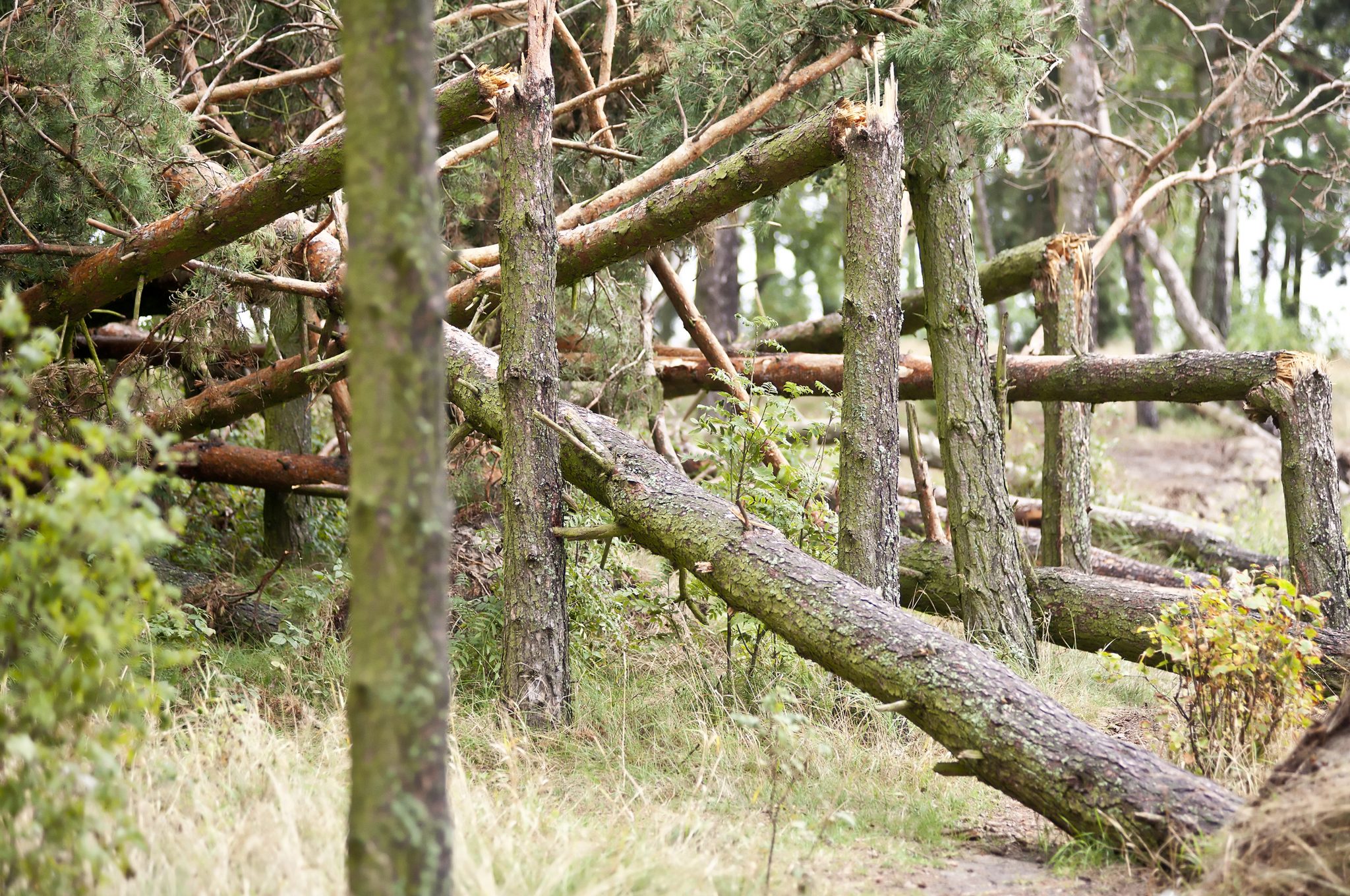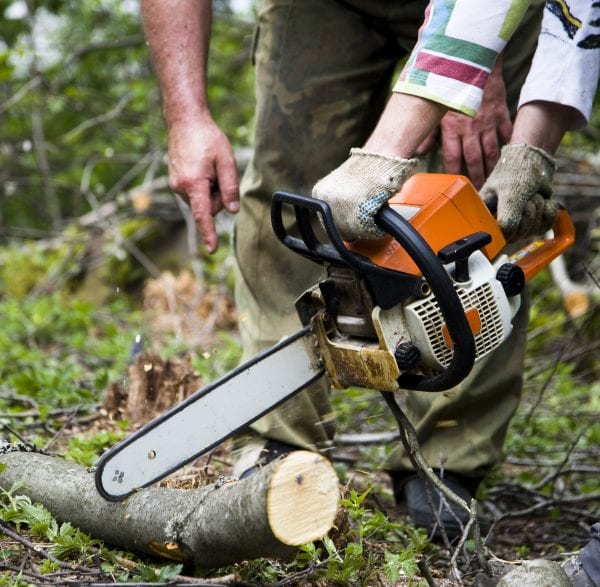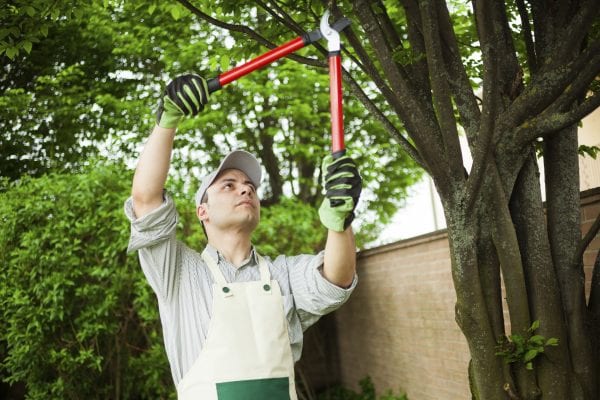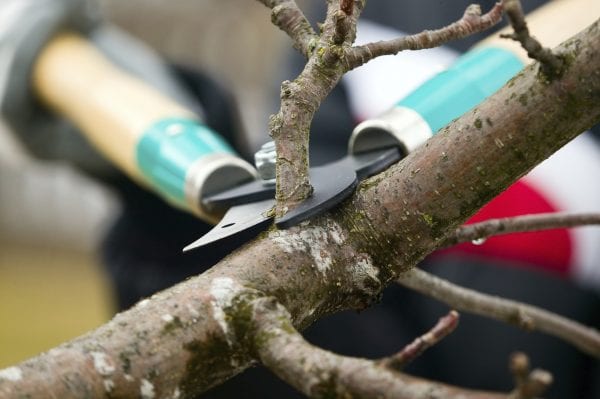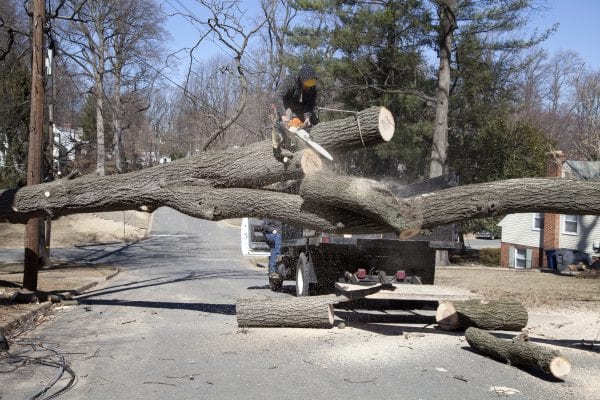Emergency Handbook

You are responsible for clearing debris from your property after a damaging natural event.
Here are some guidelines for setting priorities for clearing debris after a severe storm.
Land Use and Value
Clear streets and roads to allow emergency vehicles to pass freely. In yards and pastures, remove any lumber containing nails or other pieces of metal that could injure people or livestock.
Equipment
Power saws, tractors, bulldozers, and trucks can be used to move fallen trees. If you have access to small equipment only, remove tree roots and small limbs before attempting to clear the area.
Type of Debris
Different vegetation requires different cleanup and salvage procedures. In woodlots and forests, experienced foresters should designate salvageable timber. You may need specialized equipment to clear large areas efficiently.
Here are some ways you can remove debris:
Bulldozing
- Inspect damaged trees to see if they can be salvaged. Contact an Extension horticulturist or forestry specialist for this work.
- Remove valuable trees before clearing debris.
- If possible, attach a rake to the front of the bulldozer. This will let most of the soil pass through the teeth, eliminating undesirable mounds of soil.
- If stump removal is desired and you plan to use bulldozers, leave stumps 6 to 10 feet high for leverage. If you use a stump grinder, remove trees at ground level.
Burial
You can bury tree debris, but the cost is high. Use a chipping machine for smaller branches to reduce the burial space you need.
Landfill
You can put tree debris in eroded gullies (where the land is not practical for terracing) or in low-lying areas. Consult a water resource specialist to determine how the landfill will change the water’s path. Typically, you will need a bulldozer or other large equipment for this work. It can be dangerous to use a tractor to push debris.
Burning
Let trees dry until foliage begins to fall off. Put debris in large, compact piles a safe distance from surrounding structures or other flammables. Fuel oils may be necessary to ensure combustion. If so, exercise extreme caution and maintain a safe distance when igniting debris piles. Stoke piles and keep fire alive until all woody material is burned. In some areas, you may need a permit to burn debris.
Safety
Remember, safety always comes first. Even if you are used to working with damaged or fallen timber, observe safety precautions to prevent injury or death.
- Stabilize ladders when pruning trees, or climb into trees to prune. Use a safety rope.
- Watch for falling limbs.
- Be careful of power lines. Leave extensive pruning around power lines to power companies. Wet limbs or dirt- or soil-soaked control ropes on pruning equipment can be hazardous. Do not use pruning equipment with metal handles.
- If you have never used a chain saw, try to find someone with experience to help you. If you are experienced with chain saws, observe all safety precautions. Use a sharp saw. Shut off the saw, even when moving only a few feet. Remember that you can’t shout or hear warnings when the saw is running.
- Clear the area before beginning to saw limbs or trees. Determine the direction the tree will fall. Try to limit felling trees into other trees. Plan an escape route in case the tree jumps off the stump when cut.
FEMA Eligible Debris Removal
For debris removal to be eligible, the work must be necessary to:
- eliminate an immediate threat to lives, public health, and safety
- eliminate immediate threats of significant damage to improved public or private property
- ensure the economic recovery of the affected community to the benefit of the community at large
- reduce the risk to life and property by removing substantially damaged structures and associated appurtenances as needed to convert property acquired through a FEMA hazard mitigation program to uses compatible with open space, recreation, or wetlands management practices
Private Property Debris Removal
Debris removal from private property is generally not eligible because it is the responsibility of the individual property owner. If property owners move the disaster-related debris to a public right-of-way, the local government may be reimbursed for curbside pickup and disposal for a limited period of time. If the debris on private business and residential property is so widespread that public health, safety, or the economic recovery of the community is threatened, FEMA may fund debris removal from private property, but it must be approved by FEMA in advance.
Used by permission of the Mississippi State University Extension Service.
Use pesticides only according to the directions on the label. Follow all directions, precautions, and restrictions that are listed. Do not use pesticides on plants that are not listed on the label. Trade and brand names used are given for information purposes only. No guarantee, endorsement, or discrimination among comparable products is intended or implied by the Alabama Cooperative Extension System. This publication is for information purposes only and should not be a substitute for recommendations or treatment by a health care provider.

